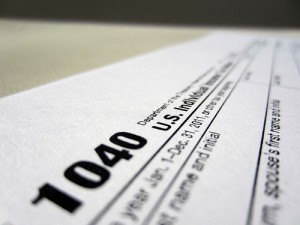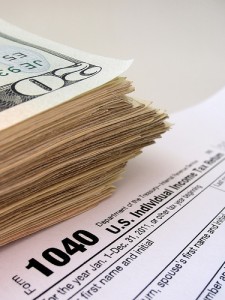Smart Ways to Use a Tax Return
 Completing a tax return has to be one of the most dreaded tasks; the never ending forms, the gobbledygook instructions and the hours of poring through figures in a desperate attempt to get everything to add up.
Completing a tax return has to be one of the most dreaded tasks; the never ending forms, the gobbledygook instructions and the hours of poring through figures in a desperate attempt to get everything to add up.
However, one of the more pleasant things associated with completing a tax return is the knowledge that you will receive a refund pay check. But before you go on a virtual spending spree in your head, take a moment to think about what you could do with the money instead.
In this short guide, we run through some of the more productive uses for tax returns and how you could make good use of your refund.
Clear your debts
Establishing a rainy day emergency savings fund is on the top of most people’s priority list but with interest rates lingering depressingly low, you might find that clearing your debts is a more effective way to make the most of your money.
If you have credit cards or a loan that allows you to make an overpayment, using the excess cash to reduce what you owe might make a real dent in the interest you have to pay. Whilst saving the money is never a bad idea, if you have a lot of outgoings, you might be better off actively using the money rather than letting it simply sit passively in your account.
Make sure you pay your tax bill ASAP
Split the difference
You might want to treat yourself to something small out of your tax return check but fear that once you have the money in your account, you will end up spending it all.
The good news is that the IRS are able to split your return in any way you want, placing some in a checking account and another in a savings account. The sums do not have to be equal so that leaves plenty of flexibility for you to decide how much you would like to stash away.
Another option is investing directly into a Treasury Savings Bond. The IRS refund can be used to directly purchase these, making the whole process of setting up an investment far easier and removing the temptation to splurge instead!
Boost your retirement
 It is very easy to underestimate just how much money you need in order to fund a comfortable retirement and many people start putting money aside a little later than ideal.
It is very easy to underestimate just how much money you need in order to fund a comfortable retirement and many people start putting money aside a little later than ideal.
Giving up work and spending your twilight years with your family should be a time of indulgence and enjoyment, not having to scrap around to find money to put food on the table or keep the house warm. For this reason, you might want to consider investing your tax return into a retirement fund, or boosting an existing investment.
If you already have an IRA, the process is very simple as the IRS can deposit your refund directly into the account. All you need to do is check that your provider accepts electronic deposits – the vast majority do – and provides the IRS with your account details.
Whilst this is a very convenient option, you should ensure that the amount of your tax return will not exceed your annual contribution allowance. The IRS will take no responsibility for this if you have provided them with instructions to deposit the whole amount into your IRA. If you are not sure how much you will be entitled to receive, you can instruct the IRS to pay a specific sum into your IRA and the rest into a separate savings or checking account.
You will also need to specify to your IRA provider which year the money is to be allocated to. If you do not specify, they will assume it is for the current/new tax year.
You could even use the money to earn a greater tax return! By investing in a tax-deductible IRA, the amount of tax you pay will drop further. If you choose to invest your refund in last year’s entitlement, you can complete a 1040X form in order to amend your tax return. Alternatively, you can simply max out the next year’s entitlement, and you will know that the return which you will receive will be even higher.
“It all starts with the 1040X tax return!”
If you have a 401(k) plan with your employer, you could use the tax return to bump up your retirement funds. This is a particularly profitable idea if your employer has a scheme where they match your contributions.
By informing your HR department that you want to increase the amount that comes out of your pay check every month; your employer will automatically raise their contribution too. You can then arrange for a portion of your refund to be transferred from your savings to your current account to compensate for the lost earnings.
Conclusion
Whilst there isn’t anything wrong with allowing yourself to enjoy a small treat with your tax return, you could profit enormously by opting to invest the money in a retirement fund or by clearing your debts. And with the IRS willing to deposit the money electronically, and split the total allocation, there really is no reason why you shouldn’t use the service to conveniently bump up the amount you have saved.
About the author: post written by Arnold Hill, consultant in accounting and inheritance tax planning in London.
Category: Taxes






Very sound advice. With interest rates at an all time low, you cannot put enough into your retirement plans. The days of the traditional pension plan are gone and taxpayers must basically create their own retirement nest egg. Getting started early will bring the power of compounding into play which is an ally for young investors. Invest the maximum you can into your retirement plans to ensure you have something big in retirement.
Starting early is key. I wish the government would have a retirement plan, linked to Social Security, started for you at birth. Seed it with $5,000, invest it in index funds and imagine what it would grow to by the time you reached 65.